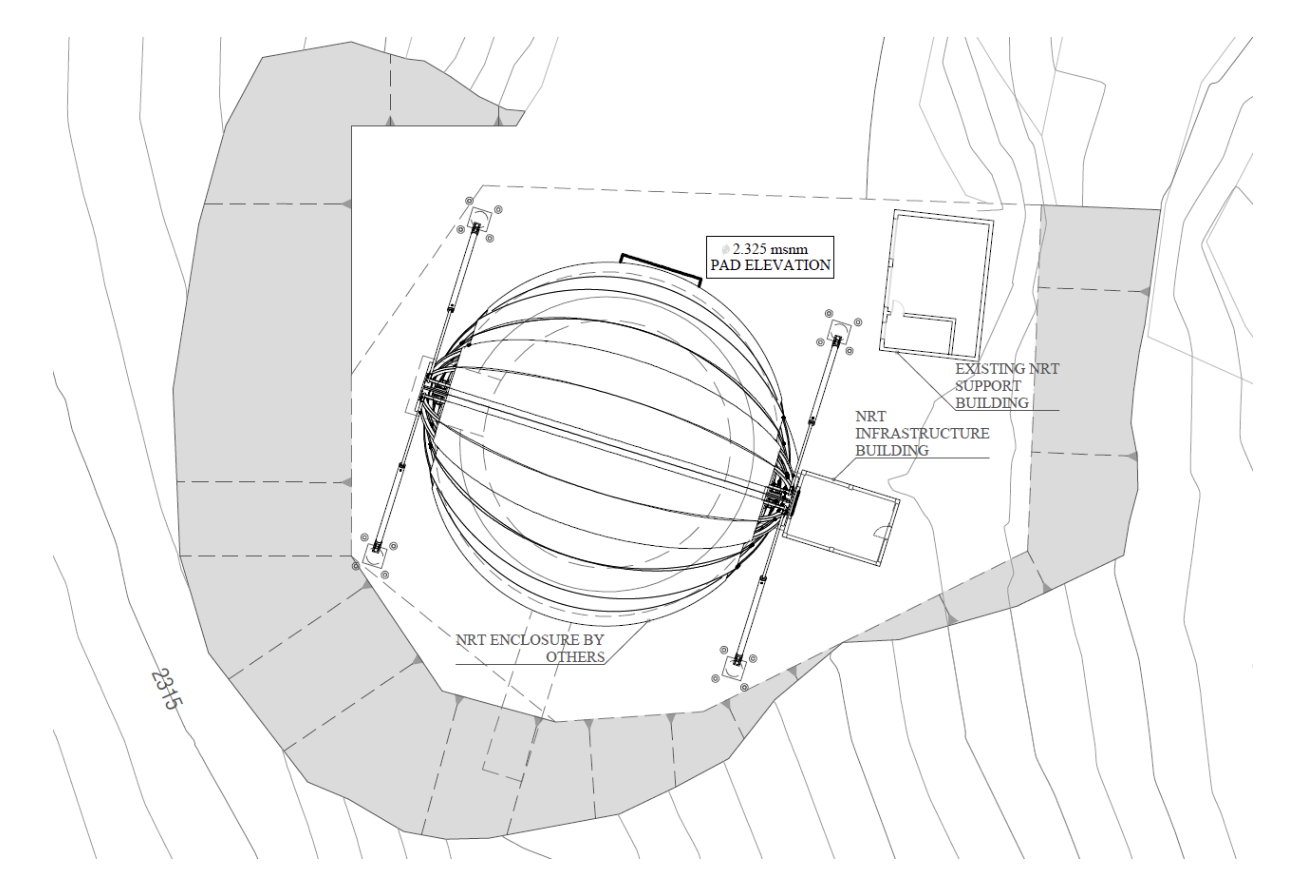

The NRT enclosure is a clamshell style protective dome with a design based on the existing Liverpool Telescope enclosure. As a robotic facility, reliability of the enclosure which protects the telescope is extremely important. A clamshell style enclosure only needs to open and close at the start or end of the night or, when weather changes (requiring a closure to prevent damage to the telescope). This is in contrast to a slewing dome which needs to rotate ‘in sync’ with the telescope to provide an opening onto the sky. The clamshell enclosure allows a complete unobstructed view of the sky which allows a lower cost, simplified drive system. As a robotic, fast slewing telescope, both reliability and fast access to the sky are important and drove the choice of the clamshell style. The two main disadvantages are that the telescope structure is less protected from wind and it is more difficult to allow the clamshell to ‘fail-safe’ in the event of a failure. The enclosure and observatory system is made up of five main parts;
Dome
The enclosure dome is a hemispherical design constructed from six portals. There are three portals on each side and each side comes together along the middle of the enclosure to cover, seal and protect the telescope. Each side is raised and lowered using two hydraulic rams (one at either end of the enclosure). The hydraulic system includes electronics, sensor systems and fault tolerant software.
The two sides of the clamshell rotate using journal bearings at each end of the observatory building. The bearings provide a low-friction pivot point for the portals to rotate around when the rams open and close the enclosure roof.
The moving roof structure has been optimised to reduce mass (~52 tonnes) while making sure the telescope remains protected in the expected wind and snow loading over a period of 25+ years.
The enclosure is designed to open or close within three minutes which allows enough time to protect the telescope if the weather changes quickly (as is often the case at our selected site on the ORM).
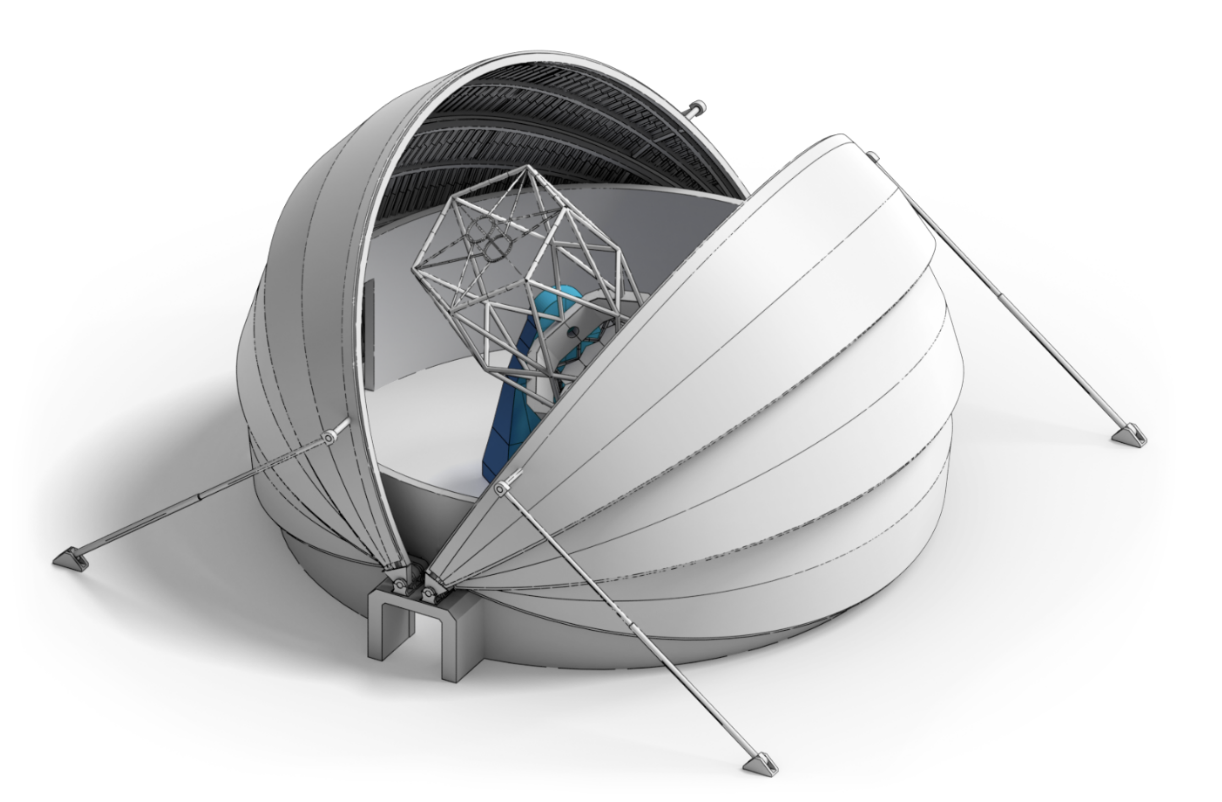
Enclosure fixed base
The fixed structure is part of the enclosure at ground level which the moving roof (clamshell) sits on top of. This is a circular building which has an entrance/exit at each end.
There is a larger roller shutter door at one side of the enclosure to allow movement of large equipment in and out of the building.
The fixed structure sits on the enclosure foundations with a fixed outer floor and a rotating inner circular section (around 12m diameter) which the telescope sits on.
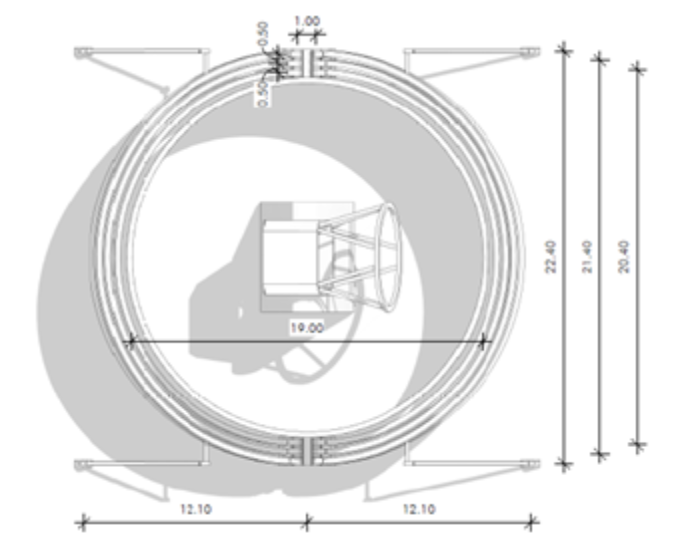
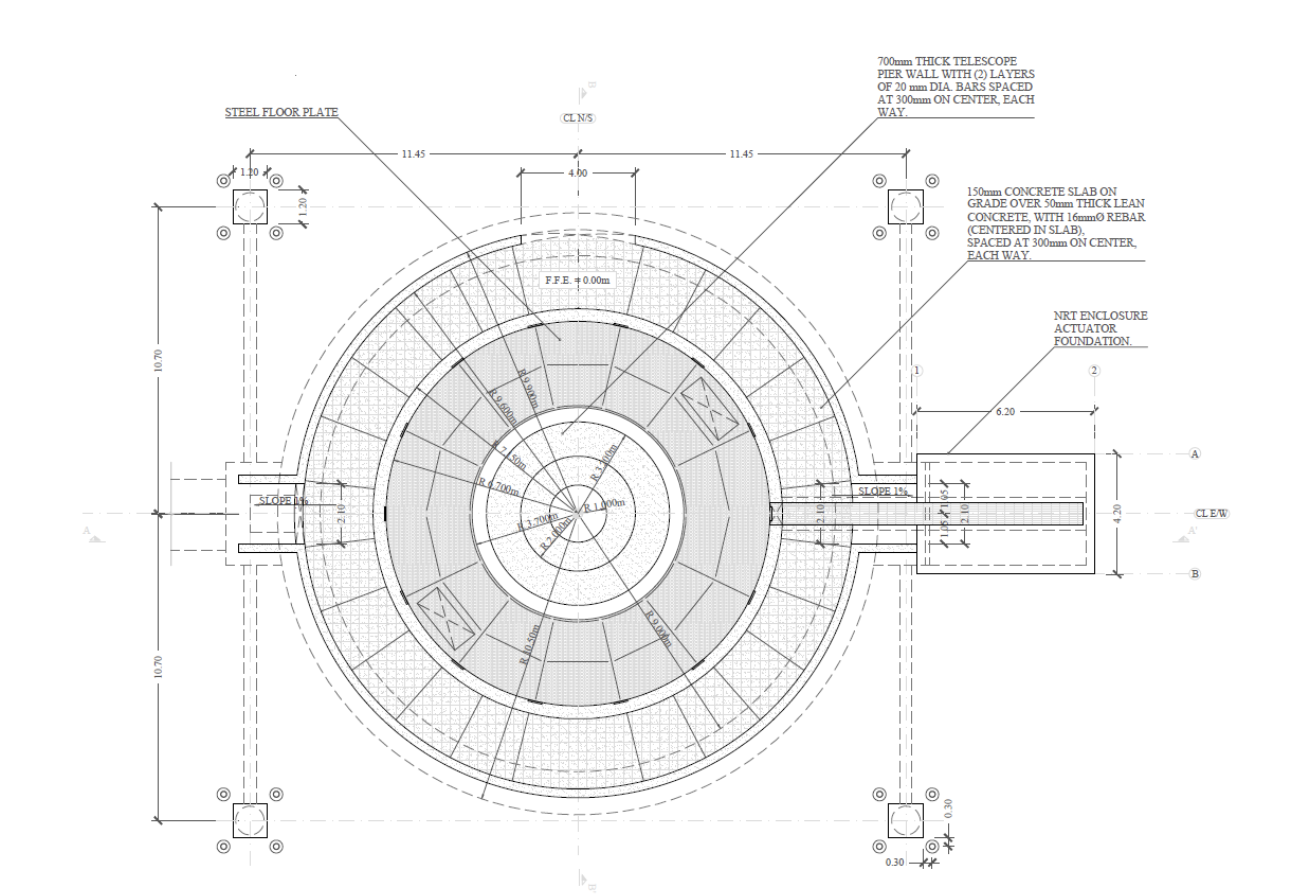
Pier and well
The well is a reinforced concrete cylinder which cuts into the ORM. This is covered with a false-floor that people can walk on to access the telescope.
The well includes an access tunnel that is useful for ventilation of the observatory but also provides an emergency exit if required. The access tunnel must not allow air to move in and out of the observatory when the telescope is in use as this can reduce the image quality.
The telescope pier is a tall concrete tube that sits in the middle of the well. The telescope sits on top of the pier where the azimuth drive system allows it to rotate.
The telescope pier must be very stiff so that it doesn’t twist while the telescope is moving. Twisting of the pier may cause the image quality of the telescope to be reduced.
It is very important that the telescope pier is physically isolated from the enclosure itself so that any enclosure vibrations do not negatively affect the telescope image quality.
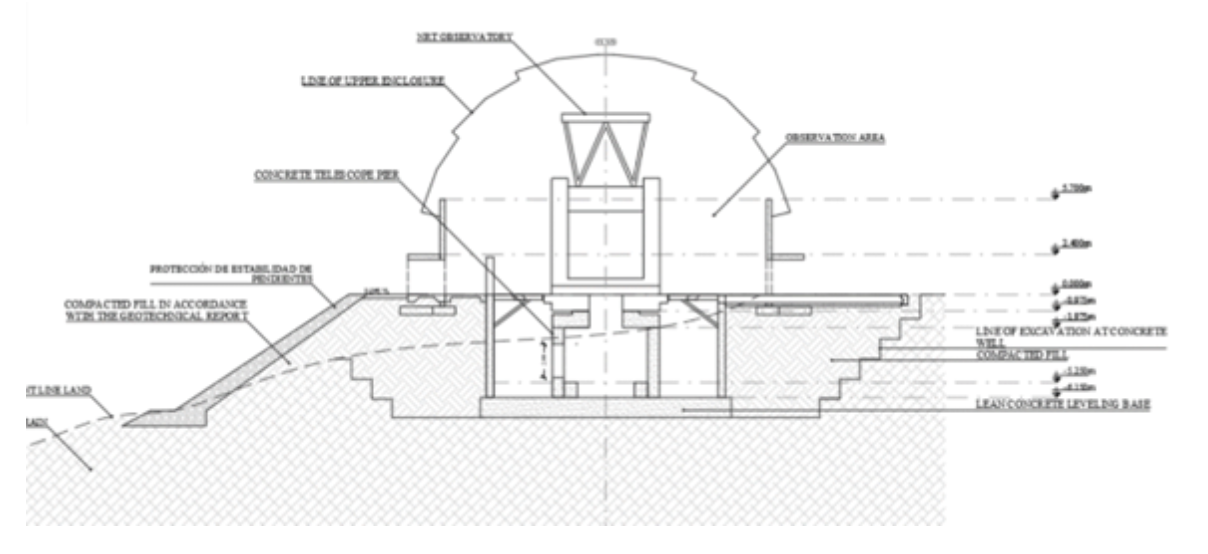
Foundations and site
The well, pier, observing floor and enclosure walls all sit on top of the foundations. The foundations resist the downward force of the observatory structures to keep the pier and surrounding building stable.
Infrastructure and support buildings
The infrastructure building provides space for all the telescope and enclosure infrastructure needs including power, oil pumps, pneumatics, data networks.
The telescope is isolated from the pump vibrations etc because there is a physical gap between the telescope pier and the other site structures.
The site support building provides an on-site workspace for staff, storage area (for telescope spare parts) and facilities for maintenance and operational tasks e.g. washing mirror segments.
